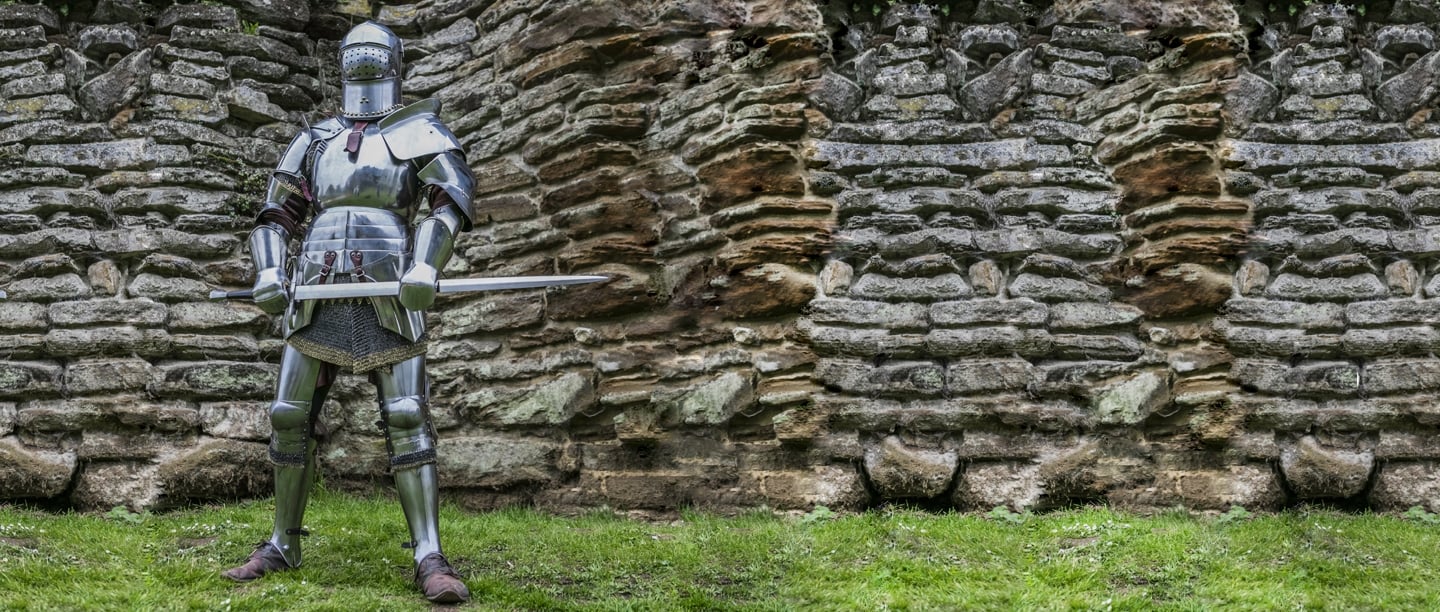1. Medieval knighting ceremonies could be very elaborate
The ceremony of making a medieval knight involved a ritual of preparation which began the night before. Prospective knights prepared for the ceremony with a bath (a rarity for the time). Then began an overnight kneeling vigil, keeping watch over an altar where their weapons had been placed. Some knights wore full armour for this vigil. In the morning, they were dressed and ceremonially accepted their sword and knightly spurs. The last step was the most important and continues to be a part of the knighthood ceremony today. The King or another person of high rank would give a light tap on the neck with a fist or a sword (known as dubbing) and proclaim ‘Be thou a knight’.
2. Edward II’s knighting ceremony involved 300 other knighthoods
In peacetime tremendous celebrations often surrounded the ‘dubbing’ of a medieval knight. Among the most spectacular was the party thrown in May 1306 for the knighting of Edward II. After completing his all-night vigil at Westminster Abbey, Edward went on to knight the 300 other young men completing the ceremony with him. Edward II’s father, Edward I provided armour, weapons, gold-embroidered robes and even beds for all of the newly established knights. After the formalities everyone sat down to a massive feast, eating swans, peacocks and 5000 salted eels and were entertained by a 'multitude of minstrels'.
Wartime knighting was simpler and often just consisted of the all-important 'accolade' blow with a sword. Knights might be 'dubbed' before a battle, to give them courage, or afterwards as a reward for bravery.
3. The ‘armoured’ knight was part of English warfare for around 450 years
The appearance of Norman knights at the Battle of Hastings in 1066 marked the start of the medieval period and the beginning of knights in England. Norman knights wore long chain-mail shirts (hauberks) and pointed, open-faced helmets. They carried long kite-shaped shields, and fought with swords and long spears, used over-arm or thrown like javelins. Over the next 450 years their armour and weapons were updated to make them more powerful and less vulnerable to enemy attacks.
4. Heraldry was used to make knights recognisable
During the Barons' Wars and the Welsh and Scottish wars of the 1200s, closed 'great helms' covered the knight's face, and they couldn't be recognised. The inventive solution was to assign each knight their own unique heraldic ‘arms’; painted combinations of colours, shapes and animals on their shields, banners and surcoats. This 'heraldry' showed friend or foe who a knight was.
5. Deadly longbows made cavalry charges less effective
The Hundred Years War between England and France (1337-1453) saw new-style iron or steel plate armour increasingly used to protect arms, legs and bodies. By the Battle of Agincourt (1415), many knights were wearing complete 'suits' of plate armour. Fear of the deadly longbow made later medieval knights abandon their vulnerable horses in battle; they fought on foot in complete plate armour. Knights went on to wear very elaborate and often expensive suits of armour during the Wars of the Roses (1455-85). The Battle of Flodden (1513), near Etal Castle, was among the last big English battles where some knights fought in full armour.
MORE TO EXPLORE
-

5 Things You Might Not Know About Tournaments
Medieval tournaments were the ultimate test of a knight's skill, strength and courage. These thrilling events kept their military skills sharp in preparation for war, but they could also be extremely lucrative for a successful knight.
-

History at Home
Discover the best stories from England’s past, from videos and podcasts to old-fashioned recipes and historical how-tos.
-

THE ENGLISH HERITAGE PODCAST
Join presenter Charles Rowe as we bring the history of our sites to life with news, views and expert interviews across over 100 episodes.

